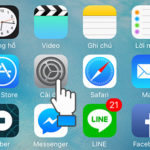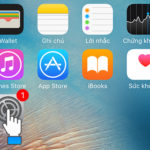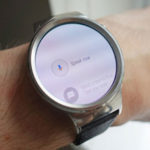When there is an incoming call or other notifications on the iPhone, by default, the phone will vibrate whether you are in ring or silent mode. Unlike before, in iOS 17 version, users can set the vibration mode according to their preferences with some additional options. Here is a detailed guide for you.
How to set vibration mode on iOS 17 as desired
Before performing the method to set vibration mode on iOS 17, you need to make sure that your iPhone has been updated to the iOS 17 versions. If you don’t know how to update, you can refer to the article How to update iOS 17 officially to experience many new and useful features.
Step 1: In iOS 17, there are 4 different options for the vibration mode, you can set it by accessing Settings > Sound & Haptics.
/fptshop.com.vn/uploads/images/tin-tuc/164522/Originals/tuy-chinh-che-do-rung-ios-17-1.jpg)
Step 2: You select the Haptic item. Here, you will see 4 vibration mode options including Always play, Not play when in Silent mode, Play in Silent mode and Never play. When you select a certain item, the description for that item will be displayed at the bottom, you can check and choose the appropriate option for you.
/fptshop.com.vn/uploads/images/tin-tuc/164522/Originals/tuy-chinh-che-do-rung-ios-17-2.jpg)
So with just 2 extremely easy steps, you have learned how to set vibration mode on iOS 17 as desired. Hope you will have interesting experiences in the future, FPT Shop wishes you success.
Guide to Restoring Data from iPhone’s iCloud
 iPhone’s iCloud’>
iPhone’s iCloud’>With the help of its backup feature, smartphones make transferring data from one device to another and restoring devices to their previous state easy. But have you ever wondered how you can restore backed up data from iCloud to iPhone?





































